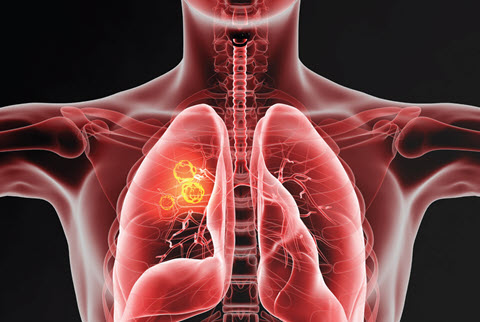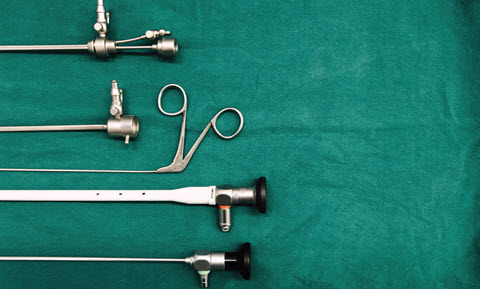Sift Through Descriptors to Bolster Your Bronchoscopy Coding Skills
Find out how many lung lobes 31628 covers. Pulmonologists and other providers use bronchoscopies to examine the patient’s body structures and capture specimens for further testing. However, the bronchoscopy code choices available in the CPT® code set require careful examination by the coder, as well. Examine the scenario below and see if you can pick out the correct procedure and diagnosis codes to report. Familiarize Yourself With This Lung Mass Scenario Scenario: A patient presents for a bronchoscopy with biopsy after chest X-rays revealed a suspicious mass in the patient’s upper lobe of the right lung. The patient initially complained of coughing up blood, chest pain when deep breathing, feeling hoarse, and shortness of breath, and the symptoms have worsened since the initial encounter. During the bronchoscopy, the provider biopsied the mass in the right upper lobe (RUL). Pathology confirms the malignancy of the mass, and the provider diagnoses the patient with a primary malignant neoplasm of the RUL. After reviewing the scenario, you’ll need to assign the correct codes. Identify the Correct Bronchoscopy Code To report this encounter, you’ll start with the procedures. In the scenario presented above, the physician performed a bronchoscopy and a biopsy of the patient’s RUL. Upon initial review of the scenario, it may seem like two CPT® codes would suffice for the encounter, but that’s not correct. Since the physician performed the biopsy by way of the bronchoscopy, the two procedures are part of one service. In the AMA CPT® code set index, search for Bronchoscopy > Biopsy to locate the code options. You’ll then turn to the Surgery/Respiratory System section of the code set to verify the code selection. The code options for a bronchoscopy start with 31622 (Bronchoscopy, rigid or flexible, including fluoroscopic guidance, when performed; diagnostic, with cell washing, when performed (separate procedure)). As you review the descriptors for each code, you’ll notice 31628 (… with transbronchial lung biopsy(s), single lobe) mentions the bronchoscopy and lung biopsy or biopsies. This is the correct code since the provider captured a specimen from only the patient’s RUL, and 31628’s descriptor specifies “single lobe.” If the provider performed biopsies of masses in multiple lobes, then you’d assign 31628 and as many instances of add-on code +31632 (… with transbronchial lung biopsy(s), each additional lobe (List separately in addition to code for primary procedure)) as needed to match the number of additional lobes. For example, if the provider performed biopsies in three lobes, you’d assign 31628 for the first lobe and +31632 x 2 to represent the two additional lobes. Note: Since +31632 is an add-on code, you can report it only along with a code for a primary procedure. Important: Regardless of whether the physician performs one or 10 biopsies in a single lobe, you’ll report 31628 only once for the procedure, according to the parenthetical note following the code. Master Malignant Neoplasm Coding In the scenario, the pathology report confirms the mass as a primary malignant neoplasm of the patient’s RUL. A malignant neoplasm is also known as cancer. Determining the correct ICD-10-CM code begins with a search of the Alphabetic Index. In the Alphabetic Index, start with Cancer > lung, where you’ll find a code as well as a note to also see “Neoplasm, lung, malignant.” This note directs you to the Table of Neoplasms, where you can follow the first column from Neoplasm, neoplastic to lung. Under the Primary Malignant column, you’ll find C34.9- (Malignant neoplasm of unspecified part of bronchus or lung). You’ll then turn to the tabular list to verify the code selection. In the tabular list under C34.- (Malignant neoplasm of bronchus and lung), you’ll find the following code subsections related to cancers of the bronchus or lung: ICD-10-CM subcategory C34.9- is designated for a malignant neoplasm of an unspecified part of the patient’s bronchus or lung. The provider’s diagnosis specifies the mass as a malignant neoplasm of the RUL, which renders C34.9- incorrect. The descriptors for C34.1-, C34.2-, and C34.3- specify upper, middle, and lower lobes, respectively. Since the malignant neoplasm is located in the upper lobe, you’ll assign a code from the C34.1- subcategory. Code C34.1- carries a 5th character required icon to indicate laterality. You’ll assign C34.11 (Malignant neoplasm of upper lobe, right bronchus or lung) to report the diagnosis. Wrap Up the Report To sum up this report, you’ll assign the following codes:



